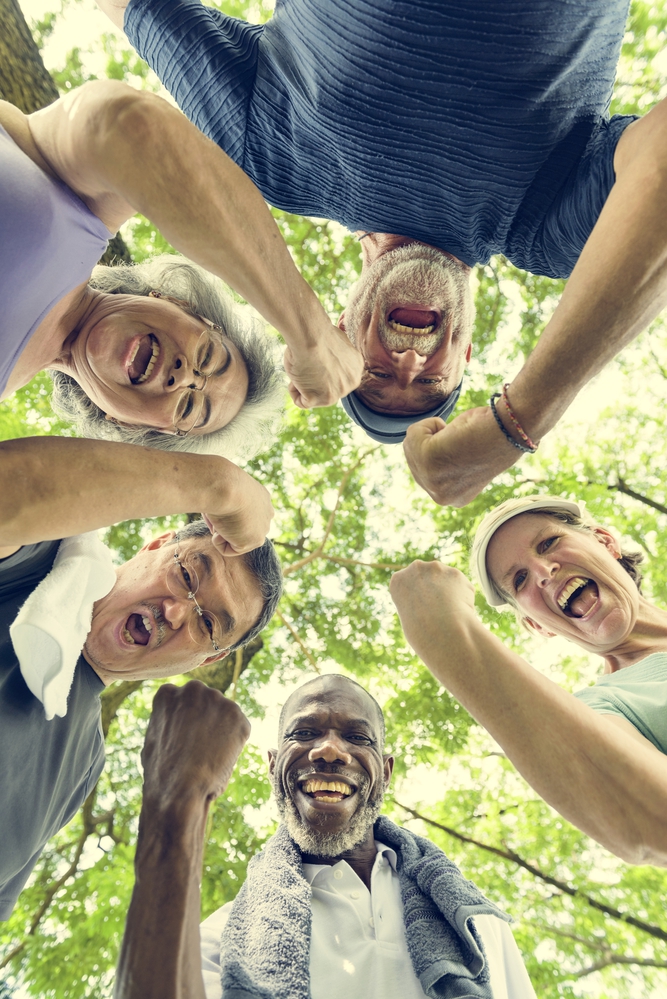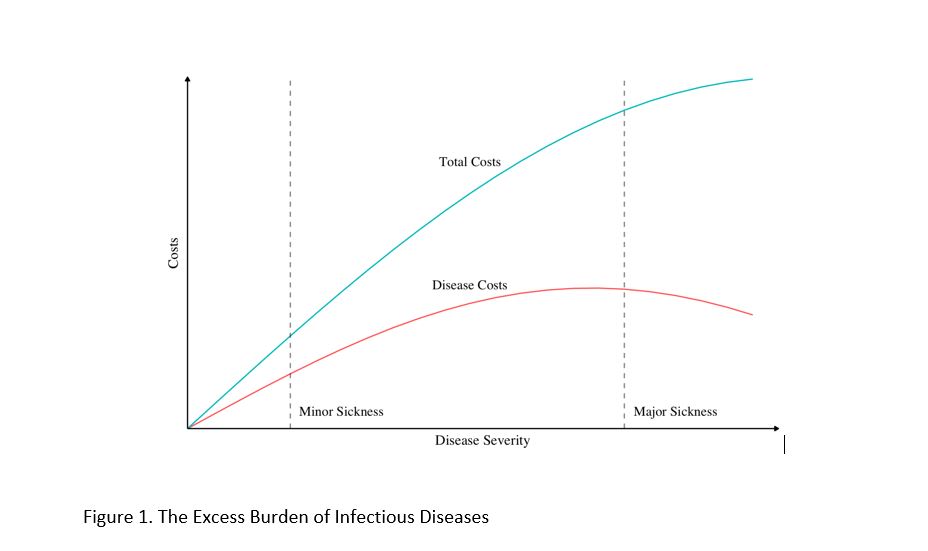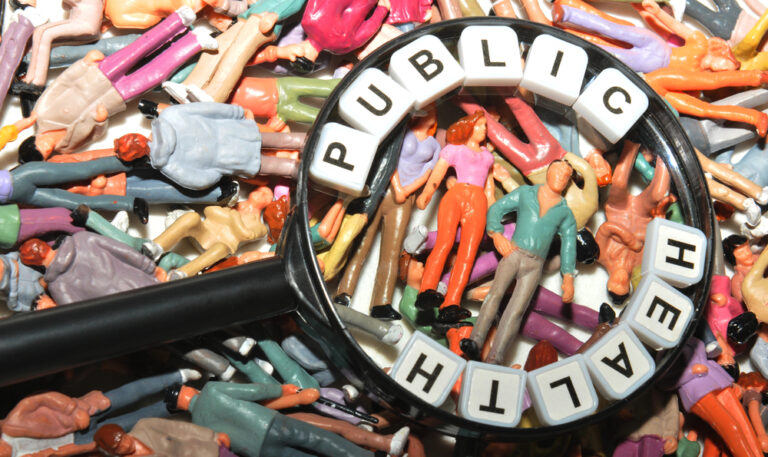
There are many ways to privately improve public health. Such responses make use of local knowledge, entrepreneurship, and civil society and pursue standard goals of public health like controlling the spread of infectious diseases. Moreover, private responses improve overall welfare by lowering the total costs of a disease and limiting externalities. If private responses can produce similar outcomes as standard, governmental public health programs—and more—perhaps we should reconsider when and where we call upon governments to improve public health.
Two Kinds of Private Responses
Following Vernon Smith and his distinction between constructivist and ecological rationality, private actors can engage in two general kinds of public health improvements. They can engage in concerted efforts to improve public health, and they can engage in emergent responses through myriad interactions. Three stories below—about William Walsh, Martha Claghorn, and Edwin Gould—indicate concerted efforts to improve public health.
Walsh, a Catholic priest and President of the Father Matthew Society in Memphis, Tennessee, used the society to organize a refugee camp outside of the city and helped hundreds of people avoid yellow fever during the 1878 epidemic—one of the worst yellow fever epidemics in the country. Shortly after learning mosquitos carried diseases prior to 1901, Claghorn chaired the Civics committee of the Twentieth Century Club in the Richmond Hill area of Long Island and led a community-wide anti-mosquito campaign, which rid the area of potentially infectious mosquitos. After realizing that many of his employees were sick with malaria, Gould—president of the St. Louis Southwestern Railway—used his wealth and business firm to finance and develop an anti-mosquito campaign throughout Texas.
These stories show how individuals recognize a public health problem given their circumstances and use their knowledge and available resources to resolve the problem. More recently, we might all be familiar with private, constructivist responses to Covid-19. We all made plans to avoid others and produce our desired amount of exposure. Many people made facemasks from old clothes or purchased them from facemask producers. Businesses, retailers, restaurants, and many others adapted in various ways to limit exposure for their workers and customers. My favorite example, albeit not relevant for most, is the so-called bubble that was implemented by the NBA, which housed teams, encouraged play, and limited infection. The NBA finished their season and crowned a 2020 champion only because of the privately designed and implemented bubble solution. The key is that the bubble pursued all of those objectives, not just one of them. All of these responses indicate how private interactions among people can minimize their exposure, through negotiation, discussion, and mutually beneficial means.
In addition to privately designed solutions, emergent public health responses are also important, perhaps even more so. Long-term migration and settlement patterns away from infectious diseases, consumption to improve nutrition, hygiene, sanitation, and the development of social norms to encourage preventative behavior are all different kinds of emergent public health responses. Each of these responses—developed through the actions of no one person—are substantial ways to improve public health.
First, consider how common migration operates as a means of lowering prevalence rates. As soon as people realized that living near stagnant bodies of water increased the probability of acquiring diseases like malaria, they were more likely to leave those areas and subsequently avoid them. Places with such features became known as places to avoid; people also developed myths to dissuade visitors and inhabitants. Such myths and associations left places like the Roman Campagna desolate for centuries. These kinds of cultural associations are also widespread; for example, many people in North and South Carolina moved to areas with higher elevation and took summer vacations to avoid diseases like malaria. East End and West End, in London, also developed because of the opportunities people had to migrate away from (and towards) several diseases.
While these migration patterns might develop over decades, movement and migration also help in more acute public health crises. During the 1878 yellow fever epidemic throughout the southern United States, for example, thousands of people fled their cities to avoid infection. They took any means of transportation they could find. While some fled to other, more northern cities, many acquired temporary housing in suburbs, and many formed campsites and refugee camps outside of their city. The refugee camps outside of Memphis—like the one formed by William Walsh—helped hundreds and thousands of people avoid infection throughout the Fall of 1878.
Second, more mundane public health improvements—like improvements in nutrition, hygiene, and sanitation—are also emergent. These improvements arise from the actions of individuals and entrepreneurs, often closely associated with voluntary consumption and markets. According to renowned medical scientist Thomas McKeown, that is, rising incomes encouraged voluntary changes in consumption, which helped improve nutrition, sanitation, and lowered mortality rates. These effects were especially pertinent for women and mothers as they often selected more nutritious food and altered household sanitation practices. With advancing ideas about germs, moreover, historian Nancy Tomes argues that private interests advanced the campaign to improve house-hold sanitation and nutrition—full of advice and advertisements in newspapers, magazines, manuals, and books. Following Tomes, economic historians Rebecca Stein and Joel Mokyr substantiate these ideas and show that people changed their hygiene, sanitation, house-hold cleaning habits, and diets as they learned more about germs. Such developments helped people to provide their desired exposure to germs according to their values.
Obviously, there were concerted public health improvements during this time that also explain falling mortality rates. For example, waterworks were conscious efforts to improve public health and were provided publicly and privately, with similar, positive effects on health. The point is that while we might be quick to connect the health improvements associated with a public water system, we should also recognize emergent responses like gradual changes in voluntary consumption.
Finally, social norms or rules that encourage preventative behavior might also be relevant kinds of emergent public health responses. Such rules identify behavior that should or should not be allowed, they are enforced in a decentralized way, and if they follow from the values of individuals in a community. If such rules pertain to public health, they can raise the cost of infectious behavior or the benefits of preventative behavior. Covering one’s mouth when sneezing is not only beneficial from a public health perspective, it also helps avoid earning disapproval.
The condom code during the height of the HIV/AIDS epidemic is another example of an emergent public health rule that reduced infectiousness by encouraging safer behavior. People who adopted safer sexual practices were seen to be doing the right thing—akin to taking care of a brother. People who refrained from adopting safer sexual practices were admonished. No single person or entity announced the rule; rather, it emerged from the actions and interactions of individuals within various communities to pursue their goals regarding maintaining sexual activity and limiting the spread of disease. Indeed, such norms were more effective in communities where people used their social capital resources to determine which behaviors should be changed and where they can more easily monitor and enforce infractions. This seems like a relevant factor where many gay men and men who have sex with men live in dense urban areas like New York and Los Angeles that foster LGBTQ communities.
Covid-19 provides additional examples where social norms encouraged the use of seemingly appropriate behavior, e.g., social distancing, the use of facemasks, and vaccination. Regardless of any formal rule in place, many people adapted their behavior because of social norms that encouraged social distancing, the use of facemasks, and vaccination. In communities that valued such behaviors, people that wore face masks and vaccinated were praised and were seen as doing the right thing; people that did not were viewed with scorn. Indeed, states and cities that have higher levels of social capital and higher values for public health tend to have higher Covid-19 vaccine uptakes.
Improving Public Health and More
“Private approaches tend to lower the total costs of diseases and they limit externalities.”
While these private approaches can improve public health, can they do more than typical public health approaches cannot? Private approaches tend to lower the total costs of diseases and they limit externalities. Each aspect of private responses requires additional explanation.
Responding to infectious diseases and disease prevention is doubly challenging because not only do we have to worry about being sick, we also have to consider the costs imposed by our preventative behaviors and the rules we might impose. Thus, the total costs of an infectious disease include 1) the costs related to the disease—the pain and suffering of a disease and the opportunity costs of being sick—and 2) the costs associated with preventative and avoidance behavior. While disease costs are mostly self-explanatory, the costs of avoiding infection warrant more explanation. Self-isolation when you have a cold, for example, entails the loss of potentially valuable social activities; and wearing condoms to prevent sexually transmitted diseases forfeits the pleasures of unprotected sexual activity. Diseases for which vaccines and other medicines are available are less worrisome, perhaps, because these are diseases with lower prevention costs than diseases where those pharmaceutical interventions are not available. Governmental means of prevention also add relevant costs. Many readers might be familiar with the costs imposed by our private and public responses to Covid—from isolation to learning loss, and from sharp decreases in economic activity to increased rates of depression and spousal abuse. Long before Covid, moreover, people bemoaned wearing masks during the Great Flu, balked at quarantine against yellow fever, and protested bathhouse closings with the onset of HIV.
Figure 1 shows the overall problem: diseases are harmful but our responses to those diseases might also be harmful.

This figure follows Bhattacharya, Hyde, and Tu (2013) and Philipson (2000), who refer to the difference between total costs and disease costs as the excess burden of a disease. That is, excess burden depends on how severely we respond to a disease in private and in public. The excess burden associated with the common cold tends to be negligible as we bear the minor inconvenience of a fever, a sore throat perhaps, or a couple days off work; moreover, most people don’t go out of their way to avoid catching a cold. The excess burden of plague, however, is more complicated; not only are the symptoms much worse—and include death—people have more severe reactions. Note too that disease costs rise with prevalence and with worsening symptoms but eventually decline as more severe diseases tend to be less prevalent. Still, no one wants to be infected with a major disease, and severe precautions are likely. We might shun all social interactions, and we might use government to impose strict quarantine measures. As disease severity rises along the horizontal axis, it might be the case that the cure is worse than the disease.
The private responses indicated above all help to lower the total costs of a disease because people choose their responses and they use their local knowledge and available resources to select cheaper methods of prevention. Claghorn used her neighborhood connections and the social capital of her civics association to encourage homeowners to rid their yards of pools of water; as such she lowered the costs of producing mosquito control. Similarly, Gould used the organizational structure of his firm to hire experts in mosquito control and build a sanitation department. These are cheap methods to limit exposure to mosquitos.
Emergent responses also help to lower the total costs of a disease because such responses indicate the variety of choices people face and their ability to select cheaper options. People facing diseases like malaria might be able to move away and, for some, it is cheaper than alternative means of prevention. Many people now are able to limit their exposure to mosquitos with screens, improved dwellings, and air conditioning. Consider the variety of ways people can limit their exposure to sexually transmitted diseases like HIV. If some people would rather use condoms to limit HIV transmission, they are better off doing so than if they were to refrain from sexual activity altogether. Similarly, some people would be better off having relatively risky sexual activity if they were in monogamous relationships or if they knew about their partner’s sexual history. That people can choose their own preventative measures indicates lower total costs compared with blunt, one-rule-for-all, governmental public health responses.
Negative and positive externalities of spreadable diseases indicate too much infectious behavior and too little preventative behavior, respectively. Hosting a party is fun, but it also incurs the internal costs of the drinks and appetizers and, more importantly, perhaps the external costs of raising the probability that people get sick. Attending a local cafe can be relaxing, but you have to pay for a cup of coffee and you might also transmit a disease to other coffee drinkers. The same could be said for many other public and social activities that might spread diseases like attending a class or a basketball game, transporting goods and people, and sexual behaviors. Our preventative behaviors from taking a vaccine to covering your mouth and from isolation to engaging in safer sexual practices emits positive externalities. If left unchecked, negative and positive externalities lead to higher rates of infection.
For more on these topics, see
Overall, we should continue to think more critically about delineating how private and public actors can improve public health and overall welfare. More importantly, we should recognize that private actors are more capable than we often realize, especially in light of conscious efforts to improve public health and those efforts that emerge from people’s actions and interactions. These private efforts might be better at advancing some public health goals than public actors do. Individuals, for example, have more access to local knowledge and can discover novel solutions that serve multiple ends—often ends they value—rather than the ends of distant officials. Such cases and possibilities indicate cheaper ways to improve public health.
Footnotes
[1] Smith (2009), Rationality in Economics: Constructivist and Ecological Forms, Cambridge University Press.
[2] For more on Walsh, see Carson (forthcoming), “Prevention Externalities: Private and Public Responses to the 1878 Yellow Fever Epidemic,” Public Choice.
[3] For more on Claghorn, see Carson (2020), “Privately Preventing Malaria in the United States, 1900-1925,” Essays in Economics and Business History.
[4] For more on Gould, see Carson (2016), “Firm-led Malaria Prevention in the United States, 1910-1920,” American Journal of Law and Medicine.
[5] On the connection between malarial diseases, dragons, and dragon-slaying saints, see Horden (1992), “Disease, Dragons, and Saints: the management of epidemics in the dark ages,” in Epidemics and Ideas by Ranger and Slack.
[6] For more on migration and prevalence rates, see Mesnard and Seabright (2016), “Migration and the equilibrium prevalence of infectious disease,” Journal of Demographic Economics.
[7] The American Journal of Public Health published several commentaries on McKeown in 2002: https://www.ncbi.nlm.nih.gov/pmc/issues/130602/
[8] Tomes (1990), “The Private Side of Public Health: Sanitary Science, Domestic Hygiene, and the Germ Theory, 1870-1990,” Bulletin of the History of Medicine.
[9] Mokyr and Stein (1996), “Science, Health, and Household Technology: The Effect of the Pasteur Revolution on Consumer Demand,” in The Economics of New Goods, NBER.
[10] See Werner Troesken’s work on public and private waterworks in the U.S. around the turn of the 20th century. See Galiani, Gertler, and Shargrodsky (2005), “Water for Life,” Journal of Political Economy.
[11] Brennan et al., (2013), Explaining Norms, Oxford University Press.
[12] For more on the condom code, see Carson (2017), “The Informal Norms of HIV Prevention: The emergence and erosion of the condom code,” Journal of Law, Medicine and Ethics.
[13] Carilli, Carson, and Isaacs (2022), “Jabbing Together? The complementarity between social capital, formal public health rules, and covid-19 vaccine rates in the U.S.,” Vaccine.
[14] Leslie and Wilson, “Sheltering in Place and Domestic Violence: Evidence from Calls for Service During Covid-19.” Journal of Public Economics 189, 104241. Mulligan, “Deaths of Despair and the Incidence of Excess Mortality in 2020,” NBER, https://www.nber.org/papers/w28303. Betthauser, Bach-Mortensen, and Engzell, “A systematic review and meta-analysis of the evidence on learning during the Covid-19 Pandemic,” Nature Human Behavior, https://www.nature.com/articles/s41562-022-01506-4
[15] On the great influenza epidemic, see CBS News, “During the 1918 Flu pandemic, masks were controversial for ‘many of the same reasons they are today’.” Oct. 30, 2020. https://www.cbsnews.com/news/mask-1918-flu-pandemic-controversial/
[16] On yellow fever quarantine in Mississippi, see Deanne Nuwer (2009), Plague Among the Magnolias: The 1878 Yellow Fever Epidemic in Mississippi.
[17] On these closures, see Trout (2021), “The Bathhouse Battle of 1984.” https://www.sfaf.org/collections/beta/the-bathhouse-battle-of-1984/
[18] Tusting et al. (2017), “Housing Improvement and Malaria Risk in Sub-Saharan Africa: a multi-country analysis of survey data.” PLOS Medicine.
*Byron Carson is an Associate Professor of Economics and Business at Hampden-Sydney College in Virginia, where he teaches courses on introductory economics, money and banking, health economics, and urban economics. Byron earned his Ph.D. in Economics from George Mason University in 2017, and his research interests include economic epidemiology, public choice, and Austrian economics.
This article was edited by Features Editor Ed Lopez.


